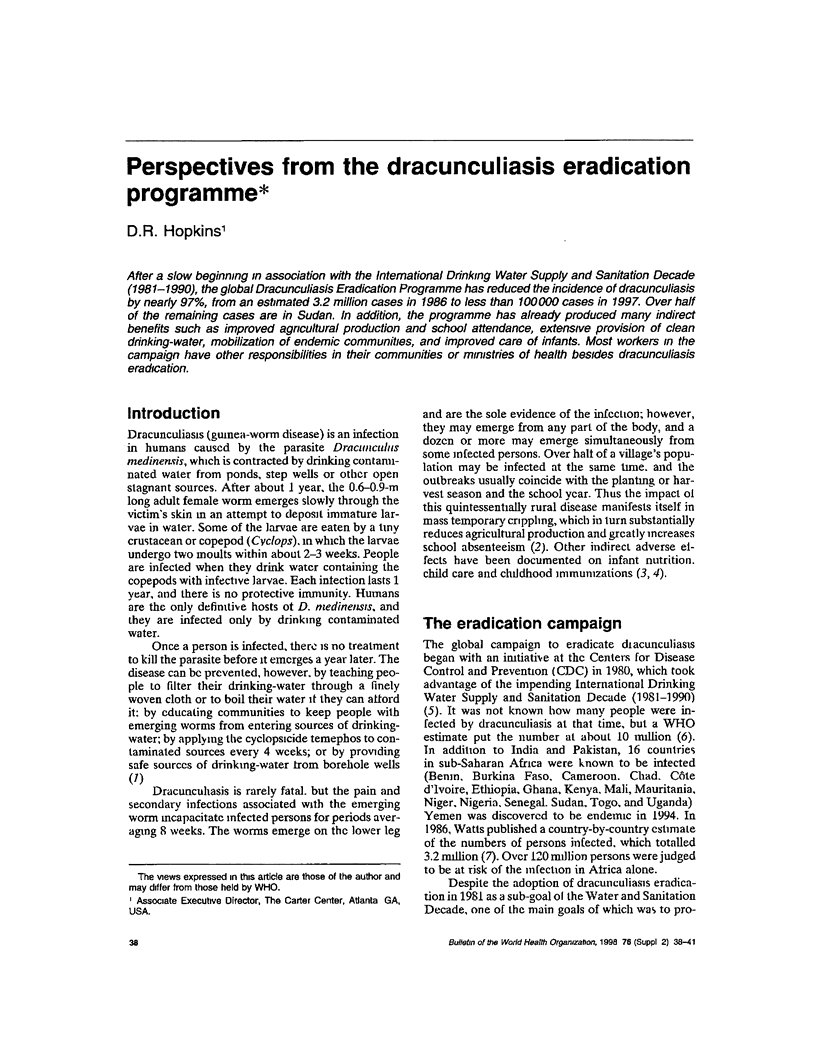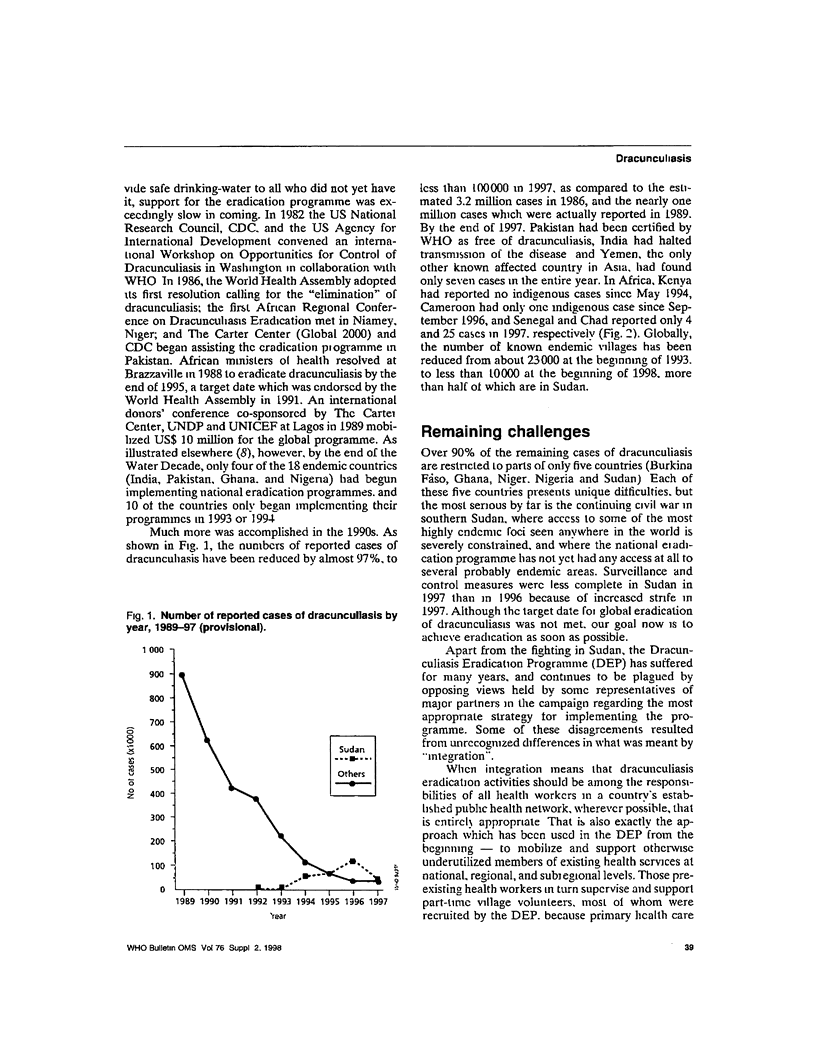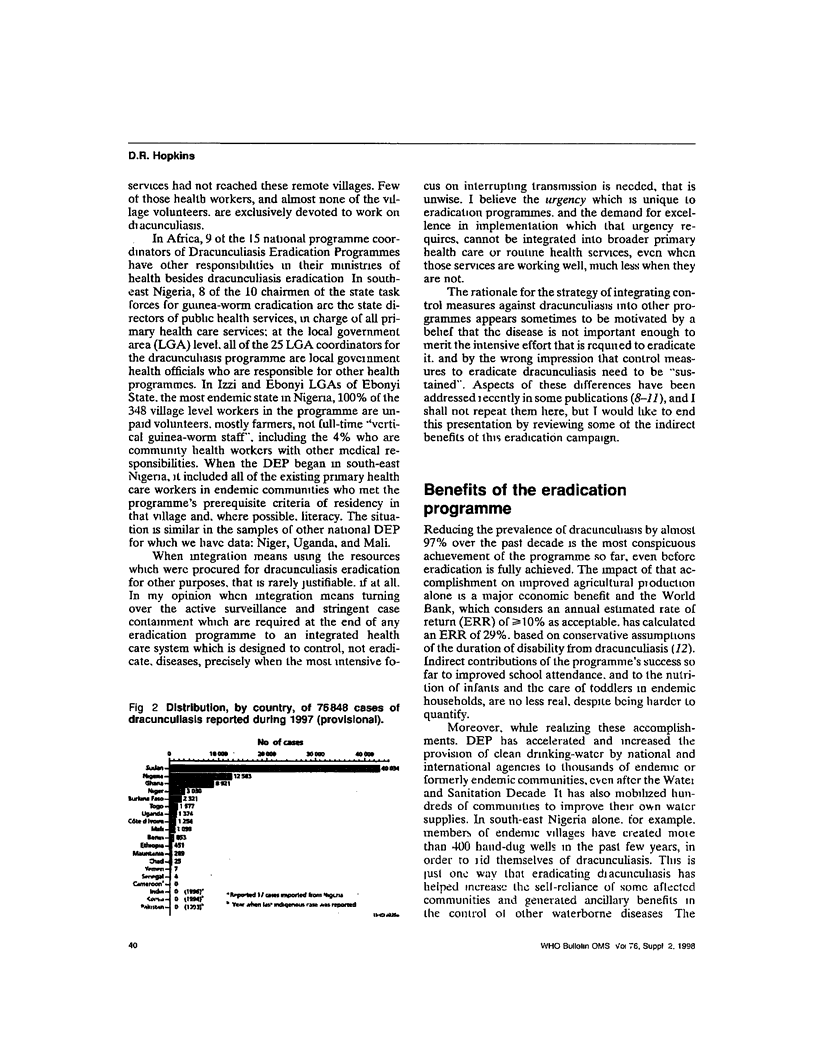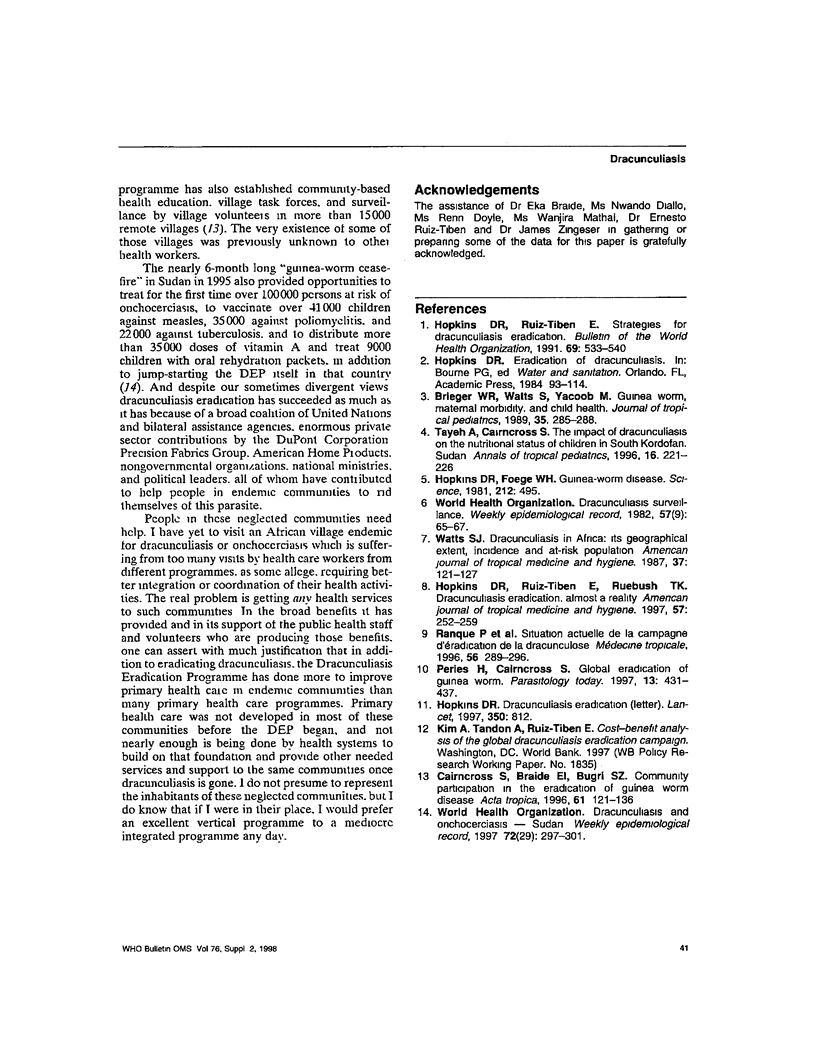Abstract
After a slow beginning in association with the International Drinking Water Supply and Sanitation Decade (1981-1990), the global Dracunculiasis Eradication Programme has reduced the incidence of dracunculiasis by nearly 97%, from an estimated 3.2 million cases in 1986 to less than 100,000 cases in 1997. Over half of the remaining cases are in Sudan. In addition, the programme has already produced many indirect benefits such as improved agricultural production and school attendance, extensive provision of clean drinking-water, mobilization of endemic communities, and improved care of infants. Most workers in the campaign have other responsibilities in their communities or ministries of health besides dracunculiasis eradication.
Full text
PDF



Selected References
These references are in PubMed. This may not be the complete list of references from this article.
- Brieger R., Watts S., Yacoob M. Guineaworm, maternal morbidity, and child health. J Trop Pediatr. 1989 Dec;35(6):285–288. doi: 10.1093/tropej/35.6.285. [DOI] [PubMed] [Google Scholar]
- Cairncross S., Braide E. I., Bugri S. Z. Community participation in the eradication of guinea worm disease. Acta Trop. 1996 Apr;61(2):121–136. doi: 10.1016/0001-706x(95)00106-o. [DOI] [PubMed] [Google Scholar]
- Hopkins D. R. Dracunculiasis eradication. Lancet. 1997 Sep 13;350(9080):812–813. doi: 10.1016/S0140-6736(05)62605-0. [DOI] [PubMed] [Google Scholar]
- Hopkins D. R., Foege W. H. Guinea worm disease. Science. 1981 May 1;212(4494):495–495. [PubMed] [Google Scholar]
- Hopkins D. R., Ruiz-Tiben E., Ruebush T. K. Dracunculiasis eradication: almost a reality. Am J Trop Med Hyg. 1997 Sep;57(3):252–259. doi: 10.4269/ajtmh.1997.57.252. [DOI] [PubMed] [Google Scholar]
- Hopkins D. R., Ruiz-Tiben E. Strategies for dracunculiasis eradication. Bull World Health Organ. 1991;69(5):533–540. [PMC free article] [PubMed] [Google Scholar]
- Periès H., Cairncross S. Global eradication of Guinea worm. Parasitol Today. 1997 Nov;13(11):431–437. doi: 10.1016/s0169-4758(97)01143-5. [DOI] [PubMed] [Google Scholar]
- Record M., Bes J. C., Chap H., Douste-Blazy L. Isolation and characterization of plasma membranes from krebs II ascite cells using Percoll gradient. Biochim Biophys Acta. 1982 May 21;688(1):57–65. doi: 10.1016/0005-2736(82)90578-8. [DOI] [PubMed] [Google Scholar]
- Tayeh A., Cairncross S. The impact of dracunculiasis on the nutritional status of children in South Kordofan, Sudan. Ann Trop Paediatr. 1996 Sep;16(3):221–226. doi: 10.1080/02724936.1996.11747830. [DOI] [PubMed] [Google Scholar]


